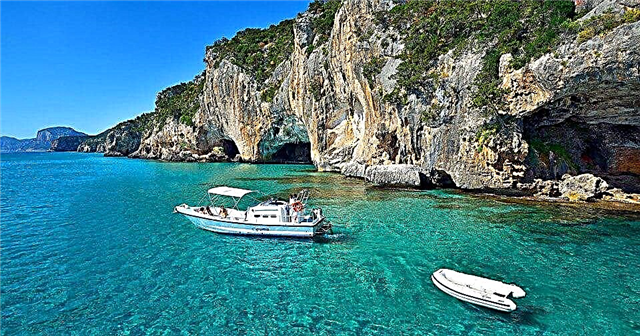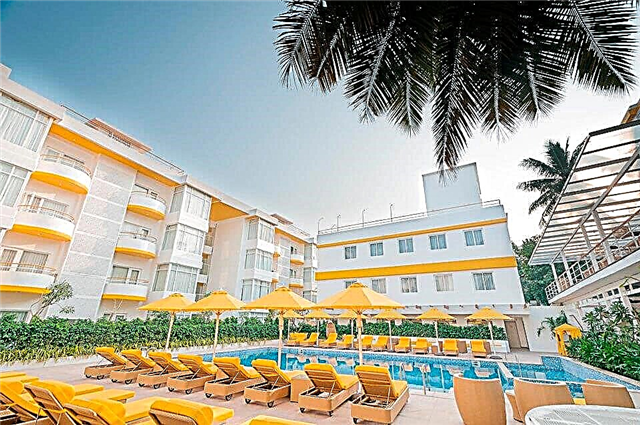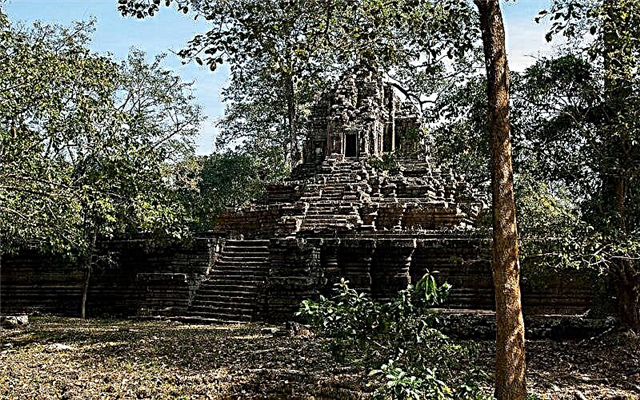Tourists who are familiar with the Angkor temple complex know firsthand that several dozen structures are located on a vast territory, each of which is unique and has a high cultural and historical significance. Of course, it is very difficult to look at all the diversity of the religious heritage of this region as part of a day excursion. Therefore, we bring to your attention an excursion program, which contains the best monuments of architecture and history of Angkor.

Before proceeding to the route, it is worth saying a few words about the history of this place. Angkor is a surviving region of the Khmer Empire that existed from the 9th to the 15th century. Some of the surviving temples are included in the list of World Heritage Sites and have long been taken under the protection of UNESCO.
If earlier Angkor was a real city, today its numerous buildings are completely destroyed, and only temples remain. This is due to the fact that ordinary Khmer dwellings and other not so important objects were built of wood, which is not particularly durable, and easily succumbed to the destructive effects of the forces of nature. But for the construction of the temples, stronger materials were used, which were based on sandstone stones.
Agkor Wat

Undoubtedly, the majestic Angkor Wat temple, which was dedicated to the main deity of that time, Vishnu, requires special attention during any excursion. The world community has long recognized this monument as one of the most majestic and significant in the history of all mankind.
Read more about the Temple of Angkor Wat, Cambodia on our website.
The main building dates back to the 12th century, when the empire was in the hands of King Suryavarman II. Agkor Wat is located in the very center of the once existing capital of the ancient state and the easiest way to get to it is from the modern settlement of Siem Reap, which is only 5.5 km away.
Phnom Bakeng

This temple belongs to the group of the most ancient religious buildings in the region. According to official sources, it took 21 years to build, and it appeared long before the above-mentioned Angkor complex. It was this complex that for a long time was considered the main one in the capital of the imperial state.
Even today, one glance at the monumental structure is breathtaking, and a completely natural question arises in my head about how the ancient inhabitants, in the absence of construction equipment, modern tools and only thanks to their fortitude, were able to build something like that? After all, it was required to clear the site, deliver heavy stone blocks to the construction site, carve out steps in the rock! But the most incomprehensible thing is that the Khmers managed to change the course of the river, deflecting the water flow at once by 3 km!
Initially, Phnom Bakeng had 108 towers, of which only a few have survived. And the building was surrounded by massive walls, which were 4 km long. Thanks to simple calculations, you can find out that the total area of the religious complex was 16 square meters. km!
Angkor Thom

The southern gate of another amazing structure - Angkor Thom - is connected by an unusual bridge, which was built to overcome a huge ditch that arose on the way of people who were going to the temple. The uniqueness of the bridge lies in the fact that it has a total length of over 100 meters!
The bridge is decorated with chiseled figures of devas and asuras (108 figurines in total), which are pulled in different directions by Naga - a snake with seven heads. Such an unusual composition forms a decorative railing and symbolizes the eternal confrontation between good and evil. Local authorities, with the support of the world community, spend a lot of money to preserve unique architectural monuments. Therefore, do not be surprised that some of the statues on the bridge look like new - this is the result of painstaking work of the restorers.

By the way, the present everywhere number "108", according to the ancients, is a universal constant of the Universe. The figure is found in almost all buildings that make up the complex.
Angkor Thom itself is a temple city, which in the 12-13 centuries was considered the main city of the empire. Therefore, he has such an unapproachable disposition. There were five gates in the city, each of which had its own strictly defined purpose. Tourists are led today through the best preserved South Pass. By the way, the gate itself can also safely claim the title of a unique sight.
Bayonne

You should definitely include in your excursion program a visit to the amazing Bayon temple, which has three levels at once and is surrounded by impressive walls. The walls are everywhere decorated with all kinds of images that tell about the peculiarities of everyday life and life of ordinary Khmers. One wall is entirely dedicated to scenes of the victories of the then ruler Jayavarman VII, including a fresco depicting one of the most successful military operations in the battle of the Tonle Sap reservoir.
The first explorers of Bayonne appeared here in the 1920s, as a result of which the complex was recognized as a Buddhist sanctuary.
Unusual verandas

The temple complex includes several unusual sites at once, the most famous of which are called the Elephant King and the Leper King. The first is located in Angkor Thom in the very center of Kings Square. The total size reaches three hundred meters and is the result of numerous reconstructions. Along the perimeter, there is a huge number of statues of elephants, which in those days enjoyed special respect among the ancient inhabitants, as well as the nagas. You can also recognize the images of hams, that is, waterfowl that served Brahma himself.
The second veranda is located nearby. The main decorations of the terrace are also statues of nagas, deities and unusual inhabitants of the deep sea. Well, here is also the statue of the Leper King, to whom the site of the same name is dedicated. There are two versions of the origin of such an unusual name for the terraces. According to the first theory, the figure of the king belongs to the ruler Jayavarman VII, who allegedly suffered from leprosy (it is with this theory that the construction of a huge number of hospitals during his reign is associated). And another version forces us to turn to the legend of the deity Yama. The site itself played an important role in funeral rituals.
Other structures

In addition to the already mentioned objects of ancient architecture, the complex includes a lot of other buildings, acquaintance with which promises many vivid impressions. For example, Preah Pitu, which itself claims to be a temple complex. Under this name, five monumental buildings are united at once, which even belong to different religious movements - Buddhism and Hinduism. Unfortunately, the main part of the attraction has been destroyed, and therefore is not popular among tourists.
Of particular interest is the Mangalartha complex, which was created in honor of the teacher of the ruler Jayavarman VII. It looks like a cross and is considered the last of the local buildings to be built using sandstone. In the center of the temple there were statues of the deity of the same name and his parent, from which today only pedestals remain.

The Bat Chum temple is unique in that, although it belongs to Buddhist sanctuaries, it was nevertheless built at a time when the territory was influenced by Judaism. And even prescriptive signs can be seen on the gates (like the modern ones “don't put cars at the gates”). The entrance was guarded by stone lions, but today only one statue of the stone "King of Beasts" remains.
Recommended for viewing Sights of Cambodia.











